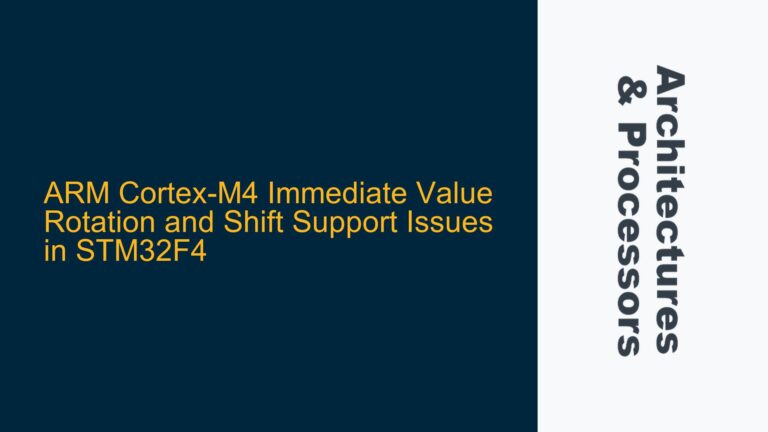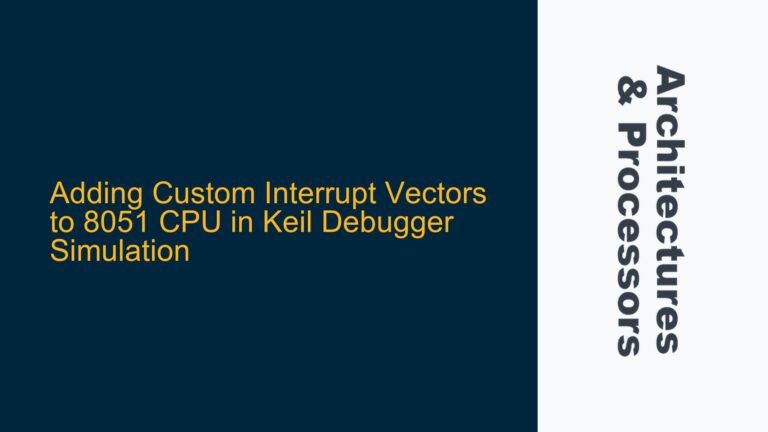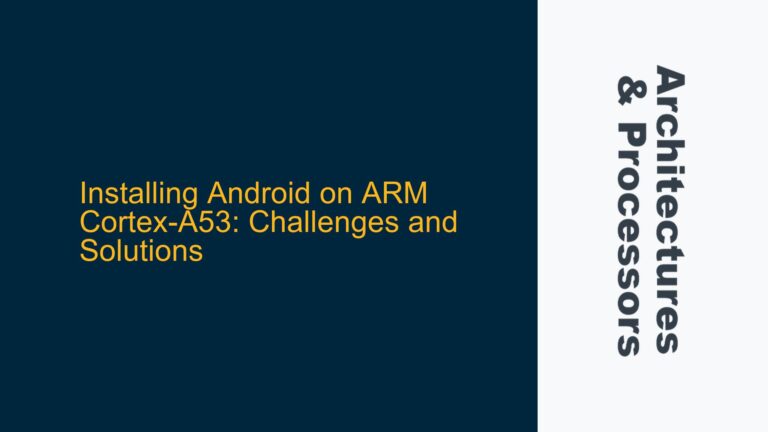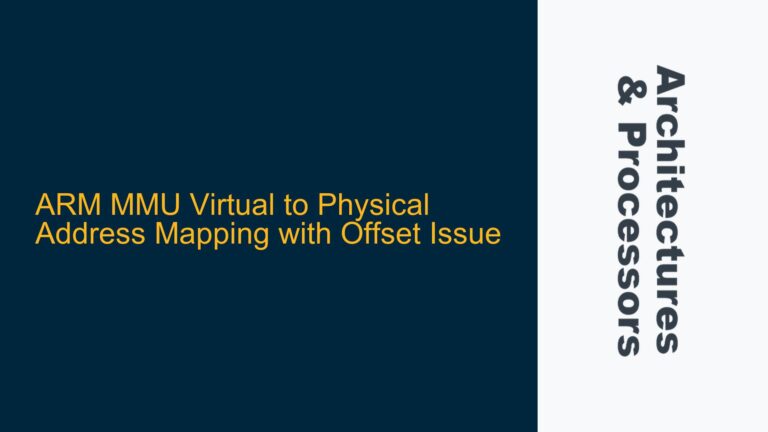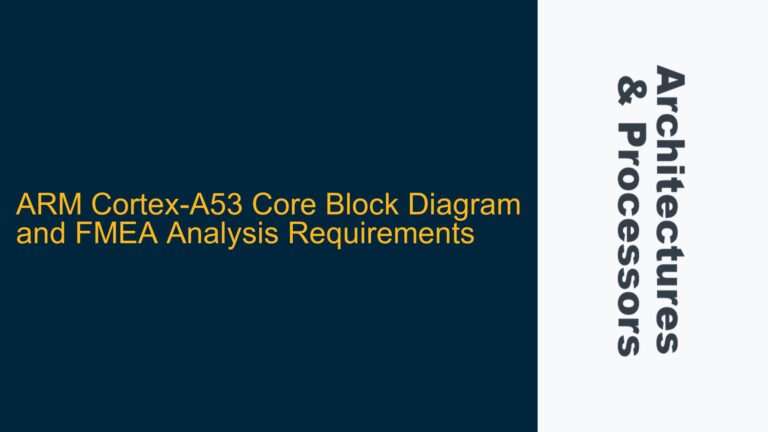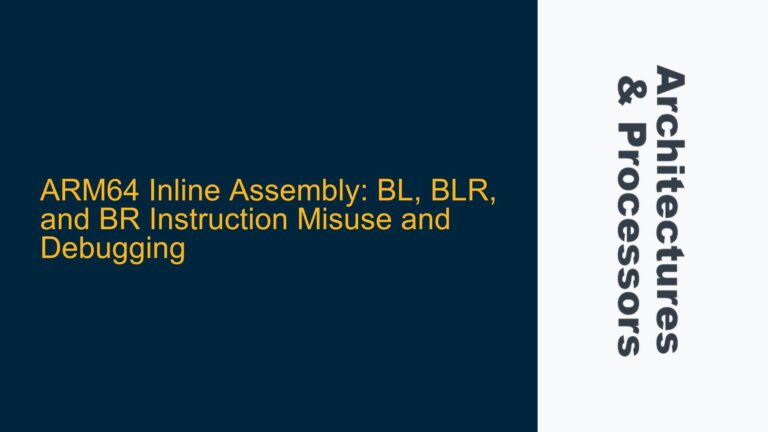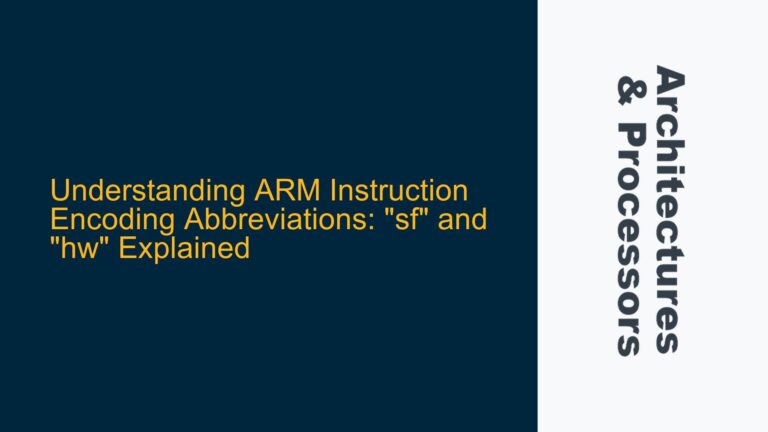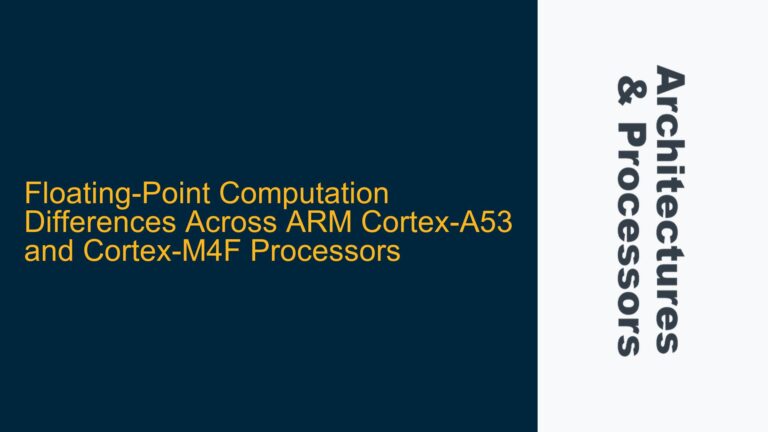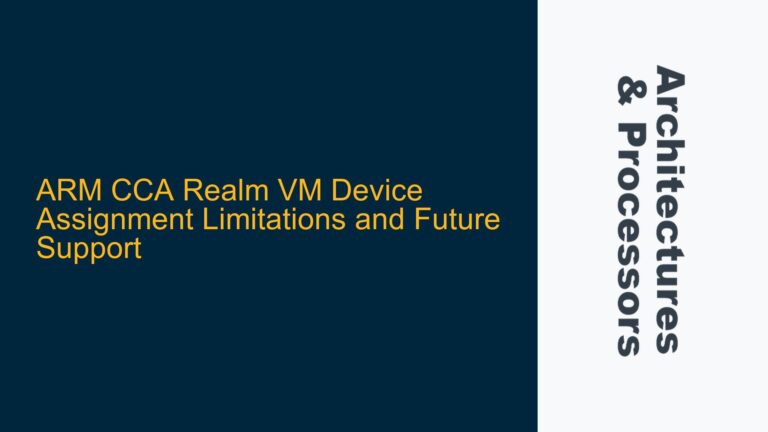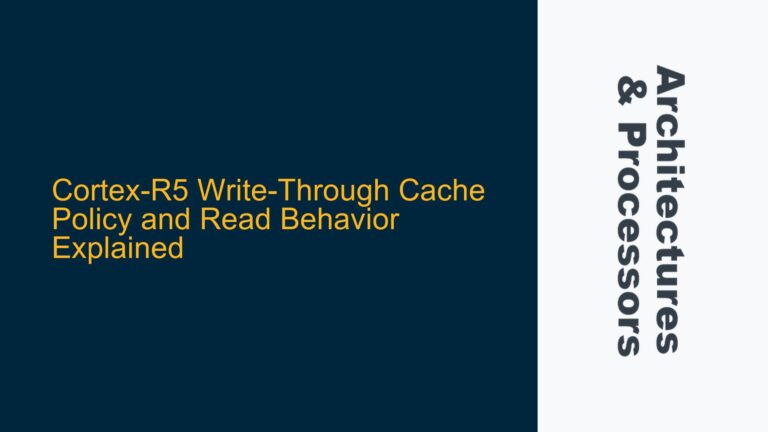ARM Cortex-M4 Immediate Value Rotation and Shift Support Issues in STM32F4
ARM Cortex-M4 Immediate Value Encoding Limitations in MOV Instructions The ARM Cortex-M4 processor, as part of the ARMv7-M architecture, employs a specific instruction set that includes both Thumb and Thumb-2 instructions. One of the key features of this architecture is its ability to handle immediate values in data processing instructions, such as the MOV instruction….
